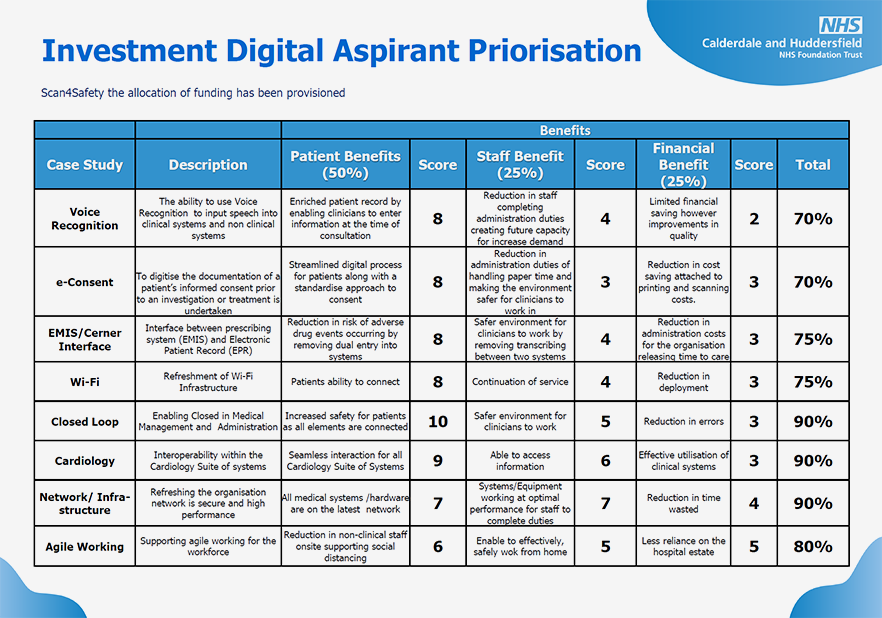Making choices is key to good strategy. Strategy is about what you’re not going to do as much as what you are going to do. This may involve saying 'no', disappointing stakeholders, turning things off or reversing previous decisions.
Your digital strategy shouldn't be a comprehensive plan
The main objective of your digital strategy is to set direction, not to outline every element of your transformation plan. Planning and prioritisation is an iterative process, not something that you can do entirely upfront.
However, your strategy is a great place to show how you will prioritise. A good way to do this is to give examples of what your trust will and won't do.
How much bandwidth does your organisation have?
It is important to understand how many different projects your trust can run simultaneously. This will be constrained not just by the number of digital and project delivery specialists you have, but also by the demands that multiple projects will place on central functions and health care professionals.
Your strategy should identify your bottlenecks. For example, it could be information governance support, data analysis skills or funding availability. Will you address these constraints, or limit the number of initiatives you are planning?
What decisions have already been made?
Some choices may be constrained by decisions that have already been made:
- Major programmes in flight
- Existing funding commitments
- Organisational changes
- Policy and regulatory changes
- ICS plans and agreed partnership workings
- Previous commitments
- Existing contracts
Many of these will be difficult to change. However, sometimes it may be better to stop a failing project and try a different approach, even if this means writing off sunk costs. Developing your digital strategy is a good opportunity to ask these critical questions and - where it makes sense - change course.
Approaches to prioritisation
- Think about value and effort
There are different approaches to prioritisation, but most of them involve an assessment of the relative value and delivery effort of each project. - Mixed portfolios
There's no one-size-fits-all approach to transformation. Portsmouth Hospitals NHS Trust’s strategy categorises their digital initiatives into maintain, improve and transform, with different treatments for each. It's worthwhile thinking about the split between core initiatives and experiments, too. Core initiatives have a high likelihood of success and a wide impact e.g. implementing a system that has been tried-and-tested at similar trusts. Experiments are riskier innovation initiatives but may offer high reward if they succeed. - Sequencing
Some things will need to be done in sequence - for example, building infrastructure to enable future work. Where possible, though, you should try to avoid building too many dependencies as this will slow down delivery. Think about what should be done in parallel. - The prioritisation process can be as important as the outcome
Discussing and agreeing priorities is a valuable activity: it forces a conversation about what really matters and builds consensus. To get the most out of this, involve a mix of disciplines in the prioritisation process: technologists, clinicians, executives and service managers.
The reality is that you have limited resources which means you can’t deliver all the big ticket digital items different services may be asking for. In our digital strategy we included a metric that scored each digital proposal in terms of patient, staff and financial benefits. This will inform our business case pipeline and we’re working with our divisional directors to ensure they own each priority.
Chief Information Officer, Calderdale and Huddersfield NHS Foundation Trust

Calderdale and Huddersfield NHS foundation trust's investment prioritisation matrix as set out in their digital strategy 2020-2025
Further reading
For more advice and inspiration on prioritisation there are lots of resources online but comprehensives guides can be found at:
- How to prioritise by Product Coalition
- Ways of Working: a short guide to prioritisation by Public Digital
- 20 Product Prioritization Techniques: A Map and Guided Tour
